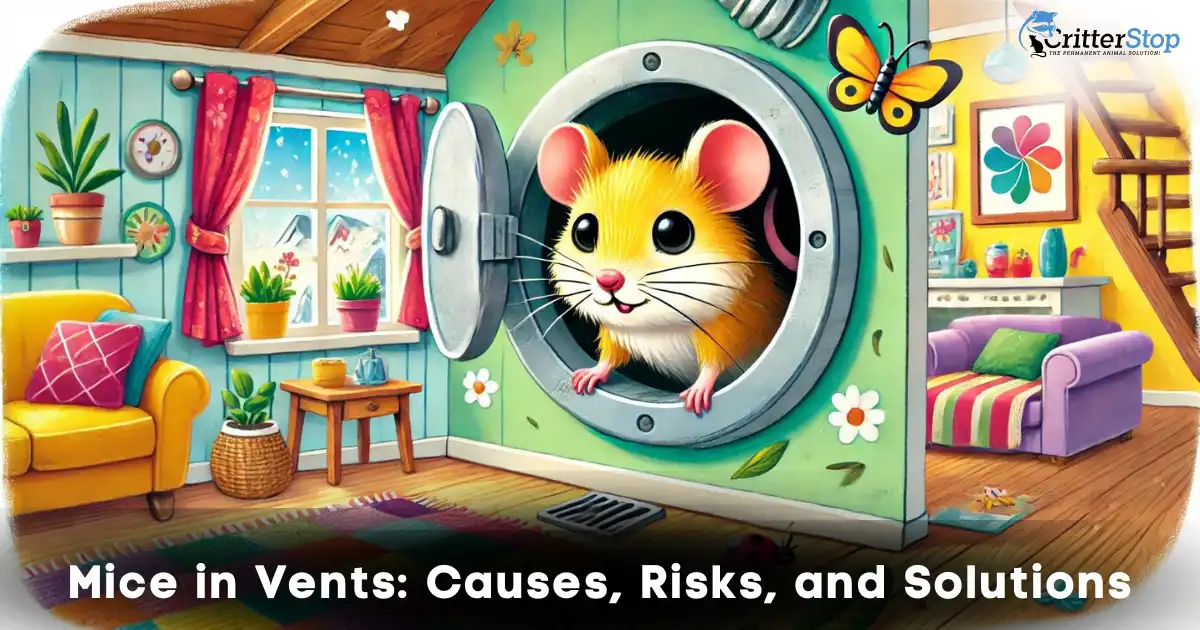
Mice in vents can be a common problem for homeowners and business owners alike. These small rodents can easily find their way into vents, especially during the colder months when they are seeking warmth and shelter. Once they get inside, they can cause a lot of damage, from making the place smell bad to disrupting the airflow.
One of the main concerns with mice in vents is the potential health risks they pose. Mice can carry a variety of diseases, including hantavirus, which can be transmitted through their droppings and urine. Additionally, their presence can exacerbate allergies and respiratory issues in those who are sensitive. To mitigate these risks, it's essential to address the problem promptly.
Hearing scratching or scurrying sounds, smelling something bad, and finding droppings or other junk around the vent area are all signs that mice may be living there. If any of these things happen, you should act promptly to resolve the issue and prevent it from worsening.
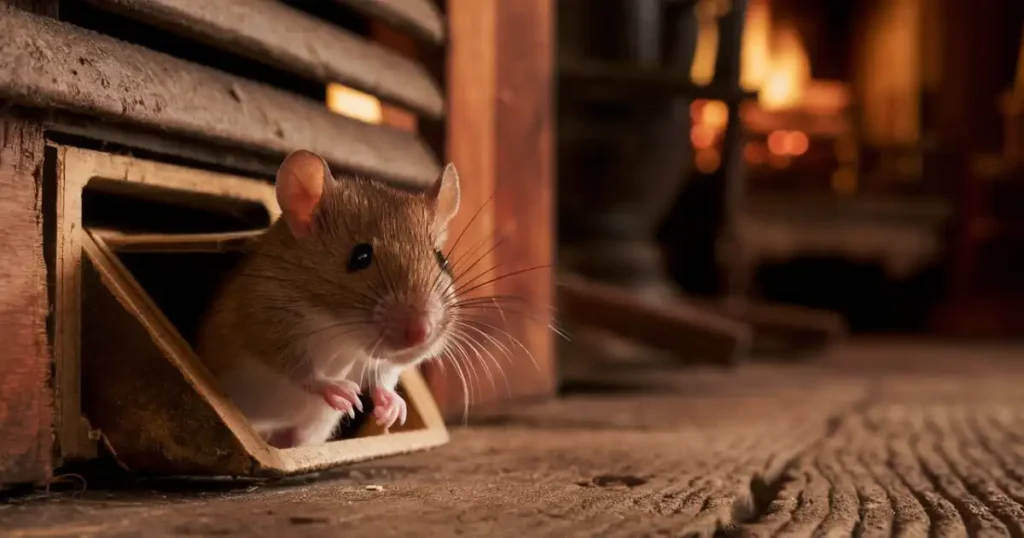
Mice in HVAC systems can cause significant issues, from physical damage to foul odors. Here’s a brief guide to addressing and preventing this problem.
Mice can damage HVAC ducts by gnawing on wires and insulation. Their droppings and urine contaminate the air, posing health risks. Dead mice cause severe foul odors.
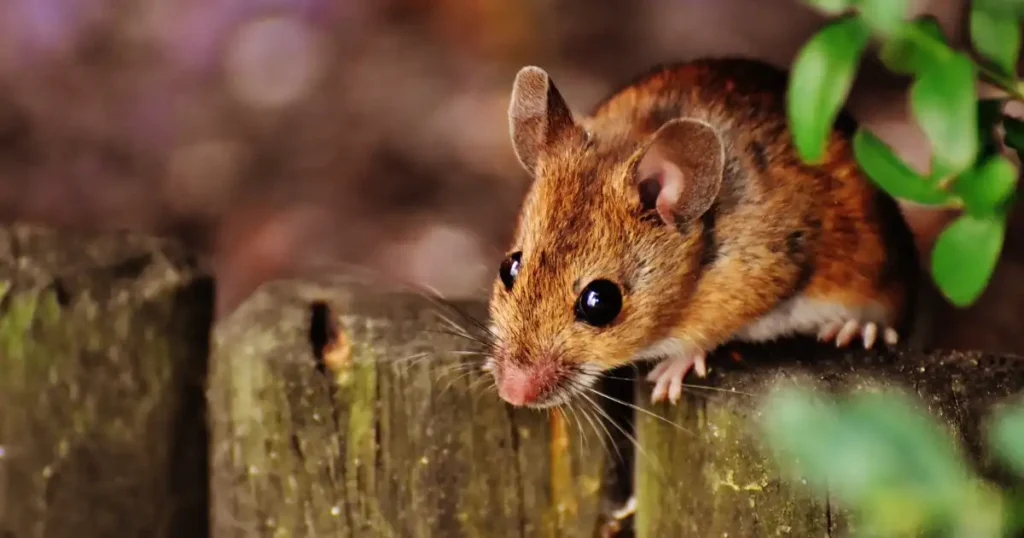
Mice infestations can be difficult to identify, especially if they are in the vents. But there are some things you can look for that might let you know they're there. These include:
You need to act quickly if you see any of these signs, so the infestation doesn't get worse.
Mice in summer are known for their ability to squeeze through small spaces. They are out and about all year, but during the summer, when they need food and a place to stay, they are more likely to break into homes.
It is said that mice are nocturnal, which means they are most active at night. They also like living with other animals and being with other people. This is why you can often find more than one mouse in the same vent.
It is important to keep your home clean and free of food scraps to keep mice away. To keep mice out of your home, you should also seal up any cracks or holes in the floors, walls, and vents.
Remember that the best ways to keep your home free of mice are to find them early and keep them from coming back.
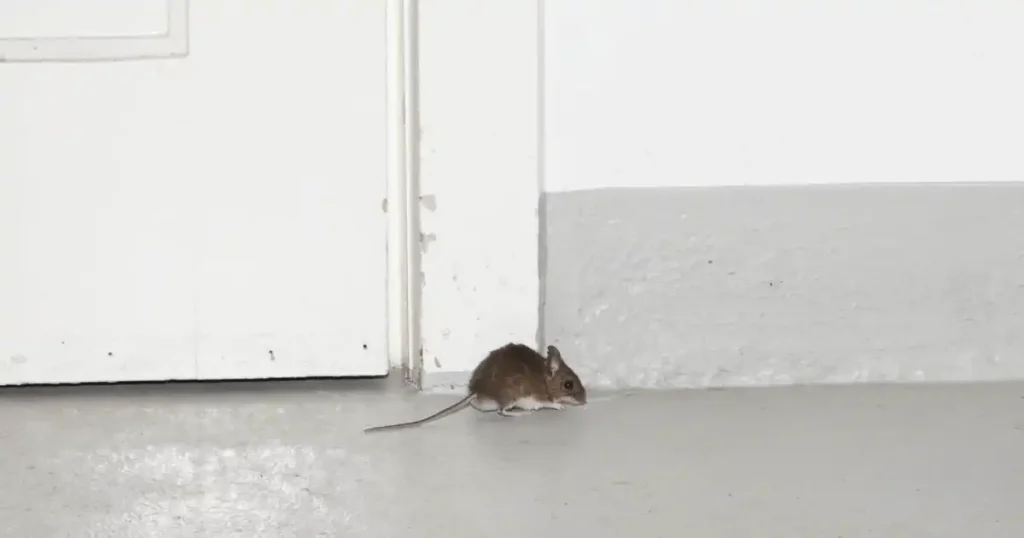
There are ways to keep mice out of your home, even though having them in the vents can be awful. Here are some good ways to keep mice out of your kitchen cabinets and ventilation system.
Making sure your vent covers are tight is one of the best ways to keep mice out of your home through the ventilation system. Plastic or weak metal vent covers are easy for mice to chew through, so it's important to buy good, sturdy vent covers. Stainless steel or heavy-duty aluminum vent covers are recommended, as they are difficult for mice to chew through.
Putting tape over any holes or cracks in the ductwork is another way to keep your ventilation system safe. Mice can get through small holes, so you should use caulk or expanding foam to fill in any gaps. This will not only keep mice out of your house, but it will also make your ventilation system work better.
It is important to keep your kitchen cabinets clean because mice are drawn to food sources. Clean up any spills or crumbs right away and make sure to store all food in containers that can be closed. Also, you should check your cabinets often for signs of mice, like droppings or food packaging that has been chewed.
If you suspect that mice have already entered your kitchen cabinets, there are several ways to get rid of them. One effective method is to use mouse traps, which can be baited with peanut butter or cheese. You could also use humane traps, which catch the mice without hurting them and let you let them go outside.
By taking these precautions, you can keep mice out of your home and out of the vents and kitchen cabinets.
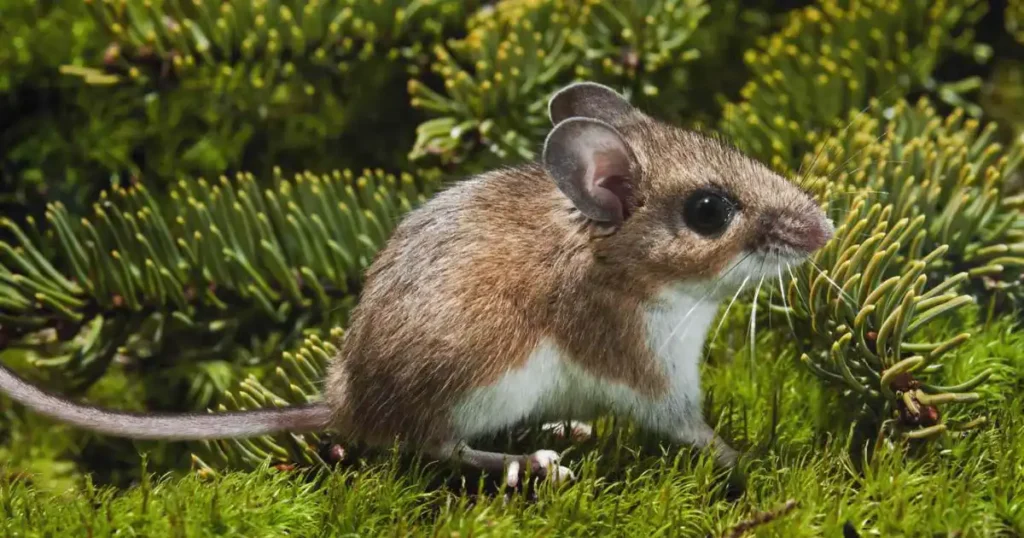
To locate mice in vents, one must conduct a thorough inspection of the HVAC system. Both professionals and homeowners are capable of doing this, but it's crucial to follow all safety precautions. ting the vents.
To find mice in vents, you must first turn off the HVAC system and take off the plugs that cover the vents. This will make it possible to see what's inside the vents clearly. To protect yourself, It's important to protect your health by putting on gloves and a mask.
After taking off the covers, look inside the vents for evidence of mice, such as droppings, nesting materials, or damage to the vents. Look for areas where mice may have entered the vents such as gaps or holes.
If mice are found in the vents, it is important to take immediate action to remove them. This can be done by using traps or by calling a professional pest control service.
Mice can be detected in living spaces by looking for certain signs. Some common signs of mice include droppings, gnaw marks, and urine stains.
Droppings are small, dark pellets that are often found near food sources or in areas where mice are nesting. Gnaw marks are small holes or chew marks on wood, plastic, or other materials. Urine stains may be visible under ultraviolet light and can be found on floors, walls, or furniture.
It is important to get rid of the mice from the living space if any of these things happen. To do this, you can either use traps or call a professional pest control service.
Overall, it's important to check vents and living spaces for signs of mice on a regular basis to avoid infestations and possible health risks.
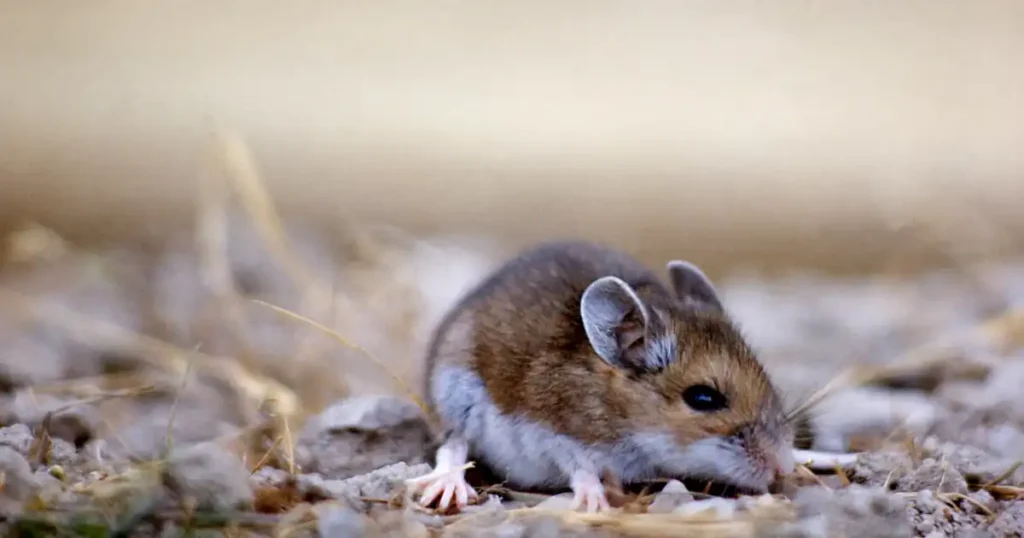
Get rid of the mice right away if you find them in your vents. While professional extermination services are available, there are several effective DIY techniques that can be used to remove mice from vents.
One effective home remedy for mouse control is the use of peppermint oil. Mice are known to dislike the smell of peppermint, so placing cotton balls soaked in peppermint oil near the vents can be an effective deterrent. Another home remedy is the use of vinegar. Mice are repelled by the strong smell. Spraying a solution of vinegar and water close to the vents can deter mice because of the strong vinegar smell, so spraying a mixture of vinegar and water near the vents can be an effective way to keep them away.
Setting up traps and baits can also be an effective way to remove mice from vents. An easy-to-use type of trap is the snap trap, which kills the mouse by snapping shut when it takes the bait. Another type of trap is the glue trap, which uses a sticky surface to trap the mouse. Baits such as peanut butter, cheese, or chocolate can be used to attract the mice to the traps.
Keep in mind that do-it-yourself methods can get rid of mice in vents, but it's also important to take steps to make sure they don't come back. Some things that can be done to do this are to seal up any openings, store food properly, and clean up any places where they could nest. With these techniques, it's possible to effectively get rid of mice in vents and prevent them from returning.
If you've tried to get rid of mice in your vents but haven't been able to, it might be time to call a professional pest control service. It is also best to let the professionals do the job if you have a big problem with mice or if you are dealing with a type of mouse that is very hard to get rid of, like deer mice.
When you hire a professional extermination service to remove mice from your vents, you can expect a thorough and effective solution. The exterminators will typically begin by inspecting your home to identify the source of the problem and determine the best course of action.
Depending on the severity of the infestation, the exterminators may use traps or poison to eliminate the mice. They may also seal off any entry points to prevent future infestations.
Keep in mind that professional pest control may cost more than do-it-yourself methods, but the peace of mind and guaranteed results are often worth the extra money.
On the whole, if you find mice in your vents, you should act quickly to prevent more damage and health risks. There are safety rules to follow and things to do to make sure the problem doesn't happen again, whether you do the job yourself or hire a professional pest control service.
One effective way to control mice outdoors is through proper landscape management. Keeping the area around the house clean and free of trash can help get rid of places where mice might hide. Regularly mowing the lawn, trimming bushes, and removing weeds can also discourage mice from making a home in the yard. Additionally, removing any standing water sources and keeping garbage cans tightly sealed can help prevent mice from being attracted to the area.
Another way to control mice outdoors is by implementing exterior proofing techniques. This means sealing up any holes or cracks in the outside of the house that could let bugs in, like those in the foundation or around doors and windows. Steel wool and expanding foam can be used to seal these areas and prevent mice from entering the home. Additionally, installing door sweeps and weather stripping can help prevent mice from entering through gaps under doors.
It is important to remember that these ways might get rid of mice outside, but they might not be the only reason. To get rid of all the mice, you might need to hire a professional pest control service.
It's crucial to take action to repair and recover from the infestation's damage after removing mice from vents successfully. This part will talk about the two most important steps: cleaning and disinfecting and fixing any damage to the vents.
Mice can carry harmful bacteria and viruses, so it is important to thoroughly clean and disinfect any areas they have been in.This includes not only the vents but also any areas nearby that might have been contaminated.
To clean and disinfect vents, follow these steps:
Mice can cause damage to vents by chewing through them or creating nests inside them. This can lead to reduced airflow and potential safety hazards.
To repair damage to vents, follow these steps:
By following these steps, you can effectively repair and recover from a mouse infestation in your vents. Remember to take preventative measures to avoid future infestations, such as keeping food stored properly and sealing any potential entry points.
Mice in vents can pose a serious health risk to humans. It is known that their urine, feces, and saliva can spread diseases. Some of the diseases that mice can spread are hantavirus, leptospirosis, salmonellosis, and lymphocytic choriomeningitis.
To stop the spread of disease, it's important to follow the right steps when cleaning up after mice in vents. To keep from getting mouse urine or droppings on your hands, you should put on safety gear like gloves, a mask, and goggles before starting to clean up.
It is also important to avoid sweeping or vacuuming mouse droppings, as this can cause the release of harmful particles into the air. Instead, clean the area with a damp cloth or sponge and throw away the cloth or sponge in a plastic bag that has a tight lid.
After cleaning up, it is recommended to disinfect the area with a solution of bleach and water. This will help get rid of any bacteria or viruses that are still alive and stop new infestations from happening. Also, any holes or cracks that mice may be using should be sealed so they can't come back.
By taking these safety precautions and understanding the health risks associated with mice in vents, individuals can protect themselves and their families from potential harm.
Picking the right vent covers is very important if you don't want mice to get into your home through vents. The right covers will keep mice out while still allowing proper ventilation. Here are some factors to consider when selecting vent covers:.
The material and design of the vent covers can affect their effectiveness in keeping mice out. It is recommended to choose covers made of durable materials such as stainless steel or heavy-duty plastic. These things are harder for mice to chew through, and they can stand up to bad weather.
In terms of design, covers with small holes or mesh screens are ideal for preventing mice from entering. The holes should be small enough to prevent mice from squeezing through but still allow proper airflow.
Proper installation of vent covers is just as important as selecting the right ones. Here are some tips to ensure your vent covers are installed correctly:
By following these tips and selecting the appropriate vent covers, you can effectively prevent mice from entering your home through vents.
Regular inspection schedules are an essential part of preventing mouse infestations in vents. It is recommended to inspect the vents at least once every three months. During the inspection, one should check for any signs of mice, such as droppings, gnaw marks, and nests. Additionally, any potential entry points should be sealed off with steel wool or caulk to prevent mice from entering the vents.
In addition to regular inspections, there are several long-term prevention strategies that can be implemented to keep mice out of vents. One of the most effective methods is to install vent covers with small mesh openings that prevent mice from entering while still allowing for proper ventilation.
Another thing you can do is keep the area around the vents clear and clean. Mice like places that are messy because they can hide and make nests there. Mice won't have as many places to hide and nest if you keep the area clean.
It is also important to keep food sources away from the vents. Mice are attracted to food, and any food sources near the vents can attract them. Additionally, any garbage or waste near the vents should be properly disposed of, as mice can use it as a food source.
Overall, regular inspections and long-term prevention strategies are crucial in keeping mice out of vents. By following these guidelines, one can effectively prevent mouse infestations and maintain proper ventilation in their home or business.
If you think mice are living in your vents, you need to get rid of them right away. Hire a professional pest control service. This is the best way to get rid of mice in your vents. Their knowledge and tools will allow them to get rid of the mice in a way that doesn't hurt your home.
Some signs that may indicate the presence of mice in your air ducts include scratching or scurrying noises coming from your vents, droppings or urine stains around your vents, and an unpleasant or musty smell coming from your air ducts.
Deer mice can carry diseases and pose a health risk to humans, so it is important to take steps to remove them from your home. One of the best ways to get rid of deer mice is to call a pest control service. They can get rid of the mice in your home safely and effectively, and they can also take steps to keep them from coming back.
Removing mice from your air ducts can be a difficult and dangerous task. It is important to hire a professional pest control service to ensure that the mice are safely and effectively removed from your home.
The most effective way to get rid of mice in your vents is to hire a professional pest control service. They have the expertise and equipment to safely and effectively remove the mice without causing damage to your home.
Mice can get into the house through floor vents, yes. Making sure there are no gaps or holes around your vents is important to keep mice out of your home.
Do away with any food or water sources that mice may be drawn to in your kitchen cabinets to get rid of them. A professional pest control service or traps can also be used to get rid of the mice in a safe and effective way.
Mice in residential ductwork can pose a health risk to humans. They can spread diseases and allergens that can make it hard to breathe and cause other health problems.
Scratching noises coming from your vents may indicate the presence of mice or other pests in your home. You should hire a professional pest control service to get rid of the pests in your home in a safe and effective way.
Take away any food or shelter that mice may be drawn to. This is the best way to get rid of mice outside. You can also get rid of the mice safely and effectively by setting traps or calling a professional pest control service.
To prevent mice from entering your vents in the future, it is important to seal any gaps or holes around your vents. You can also remove any sources of food or water that may be attracting them and keep your home clean and clutter-free.
Given the significant problems mice can cause in residential areas, it is crucial to address their presence both humanely and effectively. This is where Critter Stop comes into play. Critter Stop is a professional wildlife removal company with a stellar reputation for high-quality work and excellent customer service. Their humane methods ensure that mice and other wildlife are removed from your property safely and efficiently.
If you are experiencing issues with mice or other pests in your home, contact Critter Stop for comprehensive and humane pest control services.
Their expertise and commitment to quality make them the best choice for residential pest control in North Texas.
Contact us at (214) 234-2616 to get a free estimate of our services.
Visit our Critter Library and learn more about our furry friends